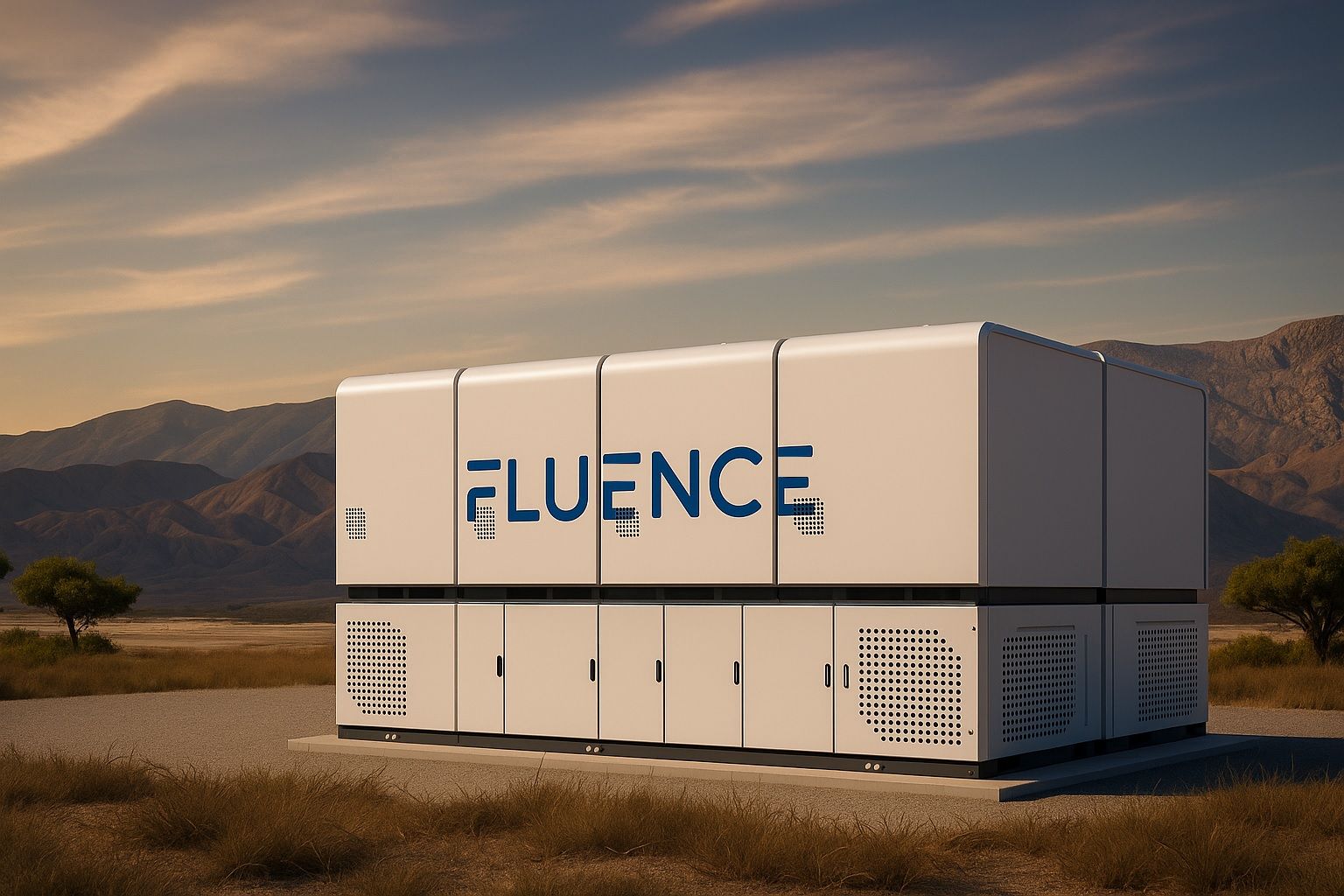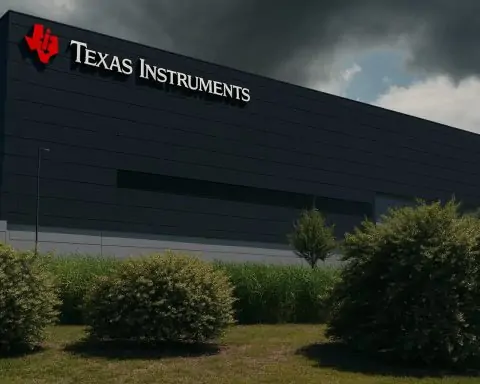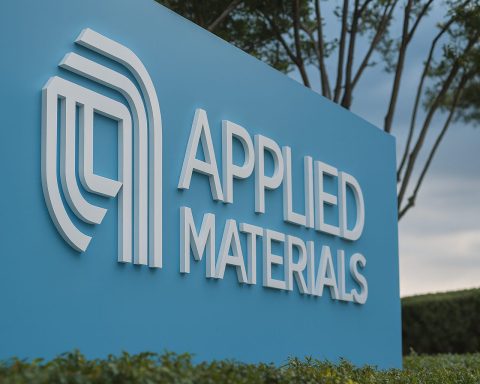As of Oct 15, 2025, Fluence Energy (NASDAQ: FLNC) trades around $18.45 [1], about 9% higher year-to-date (2025) but still roughly 20–21% below its November 2024 peak [2]. The stock has been extremely volatile: it jumped about 21% on Oct 13 and 16% on Oct 14, 2025 [3] [4]. This surge came after analysts at Susquehanna upgraded Fluence to “Positive,” nearly doubling their price target to $17 (from $9) [5]. A $1.5 trillion infrastructure proposal (including $10 billion for battery storage projects) also boosted investor enthusiasm [6]. CEO Julian Nebreda says U.S. demand is booming – he expects about half of Fluence’s global orders to come from the U.S. by 2026 [7] [8]. Despite the rally, Wall Street remains cautious: most analysts rate FLNC a “Hold” with average 12-month targets around $8–$9 [9] [10]. Fluence’s last quarter saw 24.7% revenue growth (year-over-year) but very thin margins (net margin ~–0.76%) [11]. The company designs utility-scale battery systems (e.g. Gridstack, Sunstack) and AI-driven energy management software [12]. Overall industry trends are favorable: global battery investment topped ~$50 billion in 2024 [13], and experts project battery storage capacity to climb into the hundreds of gigawatts or more by 2030 as clean-energy policies (like the U.S. Inflation Reduction Act) kick in [14] [15].
Stock Performance & Volatility
FLNC’s stock has surged in recent weeks, fueled by news and speculative interest. After trading around the mid-$5s in early September 2025, Fluence shot up roughly 83% over one month into the high teens [16]. On Oct 13 it leapt ~21.4% to about $15.89 [17], and on Oct 14 it closed near $18.43 (about +16%) [18] [19]. As of Oct 15, it is roughly $18.45 [20]. By late trading Oct 14, FLNC had jumped over 9% for 2025; however it still trades ~21% below its 52-week high (~$23.50) [21] [22]. This wild ride is typical for Fluence – the stock has notched dozens of double-digit moves in the past year. For example, it swung 12% down in one day (Oct 10) and has moved more than 5% in a session nearly 80 times in a year [23]. In short, FLNC offers big upside during rallies but carries high volatility and risk.
Recent News and Catalysts
Investors are reacting to a cascade of bullish news. On Oct 13, Susquehanna Financial analysts upgraded Fluence to “Positive” and raised their 12‑month price target to $17 (from $9) [24]. They cited strong policy tailwinds (U.S. clean-energy incentives) and Fluence’s growing project backlog as reasons to expect improved margins [25]. This announcement alone sent FLNC up ~21% on Oct 13, trading around $15.89 [26].
The rally continued Oct 14 after JPMorgan unveiled a 10-year, $1.5 trillion investment plan for U.S. infrastructure, including $10 billion earmarked specifically for battery storage and grid resilience [27]. JPMorgan CEO Jamie Dimon emphasized that the U.S. needs faster investment and fewer regulatory barriers to fuel growth. Fluence CEO Julian Nebreda chimed in by highlighting booming demand from data centers: he expects high power needs for generative AI and cloud computing to make U.S. orders “half of the company’s global demand by 2026” [28] [29]. In combination, these catalysts – big battery funding and surging AI-driven demand – lit a fire under Fluence stock. On Oct 14 FLNC spiked about 16% to ~$18.43, a 52-week high at the time [30] [31].
Other recent developments reinforce Fluence’s growth story. In late September the company won Poland’s largest-ever battery storage contract (133 MW/622 MWh) [32]. That project (for the electric grid) vaulted the stock ~40% in one week [33]. Fluence also completed a 200 MW battery system in Ukraine and opened a new 35 GWh factory in Vietnam to scale up production [34]. It even delivered its first fully U.S.-made battery systems this year, positioning itself to capture IRA tax credits [35]. All these milestones expand Fluence’s order backlog (now about $4.9 billion [36]) and underline its global footprint.
Analyst Ratings & Forecasts
Despite the recent price surge, Wall Street’s analysts remain cautious. The consensus rating is “Hold,” and the average 12-month price target is only around $8–$9 [37] [38] – well below the current share price. For example, JPMorgan’s analysts (now neutral on FLNC) raised their target only from $8 to $9 [39]. MarketBeat notes analyst price targets ranging as low as $5 and as high as $13 [40]. In aggregate, 4 analysts rate FLNC as Buy, 17 as Hold and 4 as Sell [41], yielding that $9.28 consensus target [42].
Why the caution? Fluence is still not consistently profitable. Its last reported quarter (Q2 2025) had 24.7% higher sales year-over-year (about $602.5M) but only a tiny profit margin [43]. Analysts forecast a small net loss (around –$0.26 EPS) for 2025 [44]. As one market note observes, the lofty stock price “may be ahead of fundamentals” when the company isn’t yet turning a reliable profit [45]. Seeking Alpha commentators similarly warn that high expectations are already baked in, reiterating a “Sell” stance on FLNC due to its elevated valuation and execution risks [46]. In short, analysts see Fluence as a high-potential but still-speculative stock: favorable policy tailwinds are real, but the company needs to deliver on backlog and margins to justify today’s price [47] [48].
Business Focus & Company Fundamentals
Fluence Energy is a joint venture formed by AES Corporation and Siemens in 2018 [49]. It sells and installs utility-scale battery storage systems and provides software to optimize them. Its product lineup includes the Gridstack Pro, Gridstack, Sunstack, Edgestack, and Ultrastack platforms – modular systems that utilities or large customers use for grid stability, peak shifting, and integrating renewables [50]. Each system runs Fluence’s proprietary energy management software (Fluence OS, Mosaic, etc.) that uses AI to forecast and dispatch stored power efficiently [51].
Financially, Fluence has grown revenues quickly (2024 sales ~$2.70 billion vs $2.22 billion in 2023 [52]) and recently turned a small profit (net income ~$22.7M in 2024 [53]). However, it carries significant debt (debt-to-equity ~96% [54]) and has had slim gross margins (only ~12–13% recently [55] after years of losses). The company’s large order backlog (nearly $4.9B [56]) should drive future revenue, especially as the new factory and contracts start producing output. Still, Fluence must scale up production smoothly and manage costs. Executives have already trimmed 2025 revenue guidance (to $2.6–$2.8B) due to some project delays [57].
Industry and Market Trends
Fluence operates in the fast-growing clean-energy and battery sector, which benefits from global decarbonization policies. Government incentives like the U.S. Inflation Reduction Act (IRA, ~$369 billion in climate/energy credits) are spurring investment in renewables and storage [58]. In 2024 alone, about $50 billion was invested in utility-scale battery projects worldwide [59]. Industry groups and the International Energy Agency agree that storage demand will soar: one IEA analysis projects global energy storage capacity (mostly batteries) might need to expand roughly sixfold (to ~1,500 GW) by 2030 to meet net-zero goals [60]. In practical terms, analysts forecast hundreds of gigawatts of battery installations in the coming decade.
Fluence is well-positioned in this context as a grid-scale specialist. It competes with big names like Tesla Energy (which offers the Megapack) and China’s Sungrow, who currently lead global market share [61]. Fluence and Tesla are roughly tied for #2 in storage integrator market share (around 14% each) [62]. Other competitors include GE (with its Atlas system), Wärtsilä, ABB, and new entrants from Asia (LG Energy, CATL). Fluence’s advantages are its modular “stack” design and smart software, but it faces pressure on pricing and supply chains. Analysts caution that tariffs and manufacturing bottlenecks have hurt Fluence’s growth in the near term [63].
Market Outlook
In sum, Fluence Energy’s stock has become a roller coaster ride. The past week’s double-digit gains were driven by policy tailwinds (JPMorgan’s infrastructure plan, the IRA) and AI/data-center hype, along with concrete project wins [64] [65]. Quotes from management and media capture the excitement: Nebreda forecasts “half of global demand” from the U.S. by 2026 [66], and one analysis notes that “battery storage investment topped $50 billion in 2024” and capacity is set to skyrocket [67]. At the same time, several experts caution that the stock may have overshot for now. As one market writer observed, even after Fluence’s big deals, the “consensus [analyst] targets are far below the current price” [68], signaling wariness.
Bottom Line: Fluence is at the center of a clean-energy boom, supplying large-scale batteries at a time when grid modernization is a global priority. This gives it enormous growth potential [69]. Recent news has sent the shares sharply higher, but the company still needs to prove it can convert backlog into profit. Investors are watching whether Fluence can execute on its contracts and margins before the stock’s lofty valuation comes back down to earth [70] [71]. (Sources: Reuters, TechStock²/Ts2.tech, Bloomberg, Finviz/StockStory, Insider Monkey, MarketBeat, Seeking Alpha, company filings [72] [73].)
References
1. www.reuters.com, 2. ts2.tech, 3. ts2.tech, 4. ts2.tech, 5. ts2.tech, 6. ts2.tech, 7. www.bloomberg.com, 8. ts2.tech, 9. ts2.tech, 10. www.marketbeat.com, 11. www.marketbeat.com, 12. www.reuters.com, 13. ts2.tech, 14. www.iea.org, 15. ts2.tech, 16. ts2.tech, 17. ts2.tech, 18. ts2.tech, 19. finviz.com, 20. www.reuters.com, 21. ts2.tech, 22. finviz.com, 23. ts2.tech, 24. ts2.tech, 25. ts2.tech, 26. ts2.tech, 27. ts2.tech, 28. www.bloomberg.com, 29. ts2.tech, 30. ts2.tech, 31. finviz.com, 32. ts2.tech, 33. ts2.tech, 34. ts2.tech, 35. ts2.tech, 36. ts2.tech, 37. ts2.tech, 38. www.marketbeat.com, 39. ts2.tech, 40. www.marketbeat.com, 41. www.marketbeat.com, 42. www.marketbeat.com, 43. www.marketbeat.com, 44. ts2.tech, 45. ts2.tech, 46. seekingalpha.com, 47. ts2.tech, 48. seekingalpha.com, 49. ts2.tech, 50. www.reuters.com, 51. www.reuters.com, 52. www.reuters.com, 53. www.reuters.com, 54. www.reuters.com, 55. ts2.tech, 56. ts2.tech, 57. ts2.tech, 58. ts2.tech, 59. ts2.tech, 60. www.iea.org, 61. ts2.tech, 62. ts2.tech, 63. ts2.tech, 64. ts2.tech, 65. ts2.tech, 66. www.bloomberg.com, 67. ts2.tech, 68. ts2.tech, 69. ts2.tech, 70. ts2.tech, 71. seekingalpha.com, 72. www.reuters.com, 73. ts2.tech








